P2.1 PRELIMINARY ANALYSIS
OF SOUNDINGS FROM VORTEX-95
Harold E. Brooks
Charles A. Doswell III
NOAA/ERL/National Severe Storms Laboratory
Norman, Oklahoma
Matthew T. Carr
Department of Meteorology
McGill University
Montréal, Quebec
Julia E. Ruthford
Department of Atmospheric Science
University of Washington
Seattle, Washington
1. INTRODUCTION[ ]
As a part of the 1995 field phase of the Verification of the Rotation in
Tornadoes EXperiment (VORTEX-95) (Rasmussen et al. 1995), a large number of
upper air soundings were collected. These included regular and special
soundings from the standard National Weather Service (NWS) rawinsonde network
and soundings from both fixed and mobile platforms using the Cross-chain LORAN
Atmospheric Sounding System (F-CLASS and M-CLASS, respectively). Fifty or more
soundings were collected in or near the VORTEX domain on operational days, with
the F-CLASS sites at Lubbock (LBB), Woodward (WWR), Altus (LTS), and Ardmore
(ADM) launching balloons with nominal times of 1200, 1800, 2100, and 0000 UTC
and the NWS sites at Topeka (TOP), Dodge City (DDC), Amarillo (AMA), Midland
(MAF), Norman (OUN), and Fort Worth (FWD) launching 1800 and 2100 UTC soundings
when requested, in addition to their normal 1200 UTC and 0000 UTC soundings
(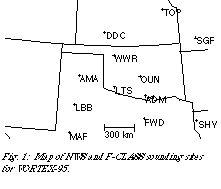 Fig. 1). Beyond that, M-CLASS soundings were taken by up to 5 vehicles on
certain days. Some of these vehicles had missions to collect soundings in the
updrafts of thunderstorms, while others sampled the environment at locations
not covered by the fixed sites. Taken together, these soundings provide a
picture of the evolution of the environment associated with severe
thunderstorms than is available on a typical day, when a special observational
project is not taking place. In this paper, we examine the soundings taken on
two VORTEX operational days, 19 April and 2 June 1995. These days have been
chosen for presentation because of the particular interesting problems that the
soundings illustrate, both from the perspective of our scientific understanding
of tornadic storms, and for the difficulties that the events provide for
operational forecasters.
Fig. 1). Beyond that, M-CLASS soundings were taken by up to 5 vehicles on
certain days. Some of these vehicles had missions to collect soundings in the
updrafts of thunderstorms, while others sampled the environment at locations
not covered by the fixed sites. Taken together, these soundings provide a
picture of the evolution of the environment associated with severe
thunderstorms than is available on a typical day, when a special observational
project is not taking place. In this paper, we examine the soundings taken on
two VORTEX operational days, 19 April and 2 June 1995. These days have been
chosen for presentation because of the particular interesting problems that the
soundings illustrate, both from the perspective of our scientific understanding
of tornadic storms, and for the difficulties that the events provide for
operational forecasters.
2. 2 JUNE 1995
On 2 June 1995, strong to violent tornadoes occurred near the small towns of
Friona and Dimmitt, Texas, northwest of Lubbock (Watson et al. 1996), as part
of a large supercell outbreak in the Texas Panhandle and northeastern New
Mexico. VORTEX field and aircraft teams collected data on both of these
storms. The environment of the southern Texas Panhandle was characterized by
strong gradients, particularly in the moisture field. Soundings launched at
approximately 2100 UTC (about the time that the supercells initiated near the
Texas-New Mexico state line west of Lubbock) from four locations illustrate
this variability well ( 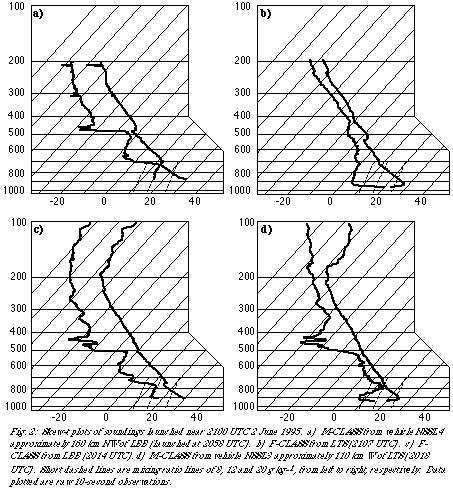 Fig. 2). The two soundings nearest the convection,
those taken by NSSL4 (Fig. 2a) and LBB (Fig. 2c) are
similar
in the low-levels, with a well-mixed layer of 12 g kg-1 boundary
layer air approximately 100 mb deep. The eastern soundings, however, show a
dry layer just off the surface. This is particularly true of the LTS sounding,
where the moisture is apparently on the order of 20 mb deep (Fig. 2b). The
NSSL3 sounding shows a shallower dry layer than LTS, but is moister than any of
the other soundings from 800-500 mb. This elevated moisture is sufficient to
make the column-integrated precipitable water approximately equal in all of the
soundings except that from LTS. It is clear, however, that the potential for
boundary layer-based convection is different for the three "wet" soundings.
This serves as a note of caution for the application of column-integrated
precipitable water values, from remote-sensing platforms, for the purpose of
determining the convective potential of the atmosphere. Note also that all of
these soundings are taken within a quadrilateral of four NWS sounding sites, at
off-synoptic times, so that the information on the gradients presented here
would be unavailable to the operational forecast community. Because of the
very shallow moisture at LTS and NSSL3, even the use of surface observations
would not help in identifying the gradients.
Fig. 2). The two soundings nearest the convection,
those taken by NSSL4 (Fig. 2a) and LBB (Fig. 2c) are
similar
in the low-levels, with a well-mixed layer of 12 g kg-1 boundary
layer air approximately 100 mb deep. The eastern soundings, however, show a
dry layer just off the surface. This is particularly true of the LTS sounding,
where the moisture is apparently on the order of 20 mb deep (Fig. 2b). The
NSSL3 sounding shows a shallower dry layer than LTS, but is moister than any of
the other soundings from 800-500 mb. This elevated moisture is sufficient to
make the column-integrated precipitable water approximately equal in all of the
soundings except that from LTS. It is clear, however, that the potential for
boundary layer-based convection is different for the three "wet" soundings.
This serves as a note of caution for the application of column-integrated
precipitable water values, from remote-sensing platforms, for the purpose of
determining the convective potential of the atmosphere. Note also that all of
these soundings are taken within a quadrilateral of four NWS sounding sites, at
off-synoptic times, so that the information on the gradients presented here
would be unavailable to the operational forecast community. Because of the
very shallow moisture at LTS and NSSL3, even the use of surface observations
would not help in identifying the gradients.
An even more dramatic example of the gradients observed on 2 June can be seen
in soundings taken
during the violent tornadoes ( 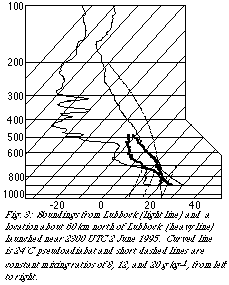 Fig. 3). Over the distance of approximately 100
km, the well-mixed boundary-layer increases from approximately 10 g
kg-1 at LBB to 16 g kg-1 at the NCAR sounding. This
results in an increase of the computed CAPE value from about 1100 J
kg-1 to 3500 J kg-1 (using the upper part of the sounding
from LBB for the environment) and a lowering of the level of free convection
from 690 mb to 800 mb. Again, since these are special soundings, operational
forecasters would be unaware of these significant gradients in thermodynamics.
Both of these soundings would be considerered "proximity" soundings, by any
definition. This calls into question the nature of what is meant by proximity
and the meaning of any previous studies using proximity criteria to identify
environmental conditions. The existence of strong storm-produced gradients in
the vicinity of convective storms has been modelled and the implications for
our understanding of severe convection discussed in Brooks et al. (1994).
Fig. 3). Over the distance of approximately 100
km, the well-mixed boundary-layer increases from approximately 10 g
kg-1 at LBB to 16 g kg-1 at the NCAR sounding. This
results in an increase of the computed CAPE value from about 1100 J
kg-1 to 3500 J kg-1 (using the upper part of the sounding
from LBB for the environment) and a lowering of the level of free convection
from 690 mb to 800 mb. Again, since these are special soundings, operational
forecasters would be unaware of these significant gradients in thermodynamics.
Both of these soundings would be considerered "proximity" soundings, by any
definition. This calls into question the nature of what is meant by proximity
and the meaning of any previous studies using proximity criteria to identify
environmental conditions. The existence of strong storm-produced gradients in
the vicinity of convective storms has been modelled and the implications for
our understanding of severe convection discussed in Brooks et al. (1994).
3. 19 APRIL 1995
Storms formed over a wide area of north Texas on 19 April 1995. Tornadoes were
reported in the early afternoon south and east of Dallas, in the late afternoon
northwest of Abilene, Texas, and, near dark, north of Wichita Falls, Texas near
the Red River in Texas and Oklahoma and in Fort Worth. In part because of the
widespread convection occurring near the boundaries of the VORTEX domain very
early and late in the operations period, as well as the rapid storm motion,
VORTEX did not collect data on any of the storms on this day. The
environmental soundings are of interest, however. A typical sounding from
southern Oklahoma and northern Texas is characterized by a deep surface
inversion (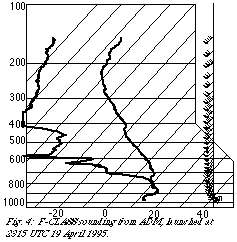 Fig. 4). In the surface layer, winds veer rapidly with height,
producing large values (nearly 1000 J kg-1) of 0-3 km
Storm-Relative Environmental Helicity (SREH), given the observed storm motion.
Boundary layer parcels, however, show near zero values of Convective Available
Potential Energy (CAPE).
Fig. 4). In the surface layer, winds veer rapidly with height,
producing large values (nearly 1000 J kg-1) of 0-3 km
Storm-Relative Environmental Helicity (SREH), given the observed storm motion.
Boundary layer parcels, however, show near zero values of Convective Available
Potential Energy (CAPE).
We have also calculated values of SREH and CAPE for parcels immediately above
the inversion layer for comparison (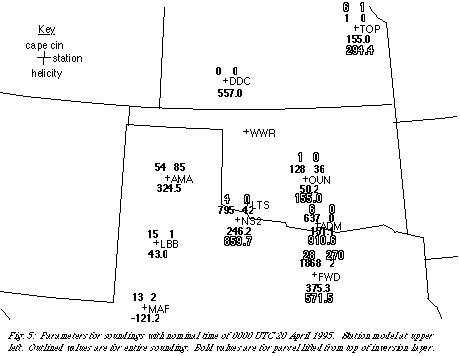 Fig. 5). Parcels from above the inversion
layer have significantly higher values of CAPE (up to more than 1800 J
kg-1 at FWD), while having much lower SREH (O~150 J
kg-1). This raises questions about the nature of the environment
that the thunderstorms near the Red River "saw" that evening. In order to get
a significant value of CAPE, the relevant parcel had a much lower SREH than the
entire depth of the sounding indicated. In addition, deep surface inversion
layers do not fit current conceptual models of supercell tornadogenesis. Thus,
there are several interesting questions for future research raised by the 19
April soundings.
Fig. 5). Parcels from above the inversion
layer have significantly higher values of CAPE (up to more than 1800 J
kg-1 at FWD), while having much lower SREH (O~150 J
kg-1). This raises questions about the nature of the environment
that the thunderstorms near the Red River "saw" that evening. In order to get
a significant value of CAPE, the relevant parcel had a much lower SREH than the
entire depth of the sounding indicated. In addition, deep surface inversion
layers do not fit current conceptual models of supercell tornadogenesis. Thus,
there are several interesting questions for future research raised by the 19
April soundings.
4. DISCUSSION
VORTEX-95 collected a large number of soundings about the environmental
conditions on a number of days on which tornadoes occurred. We have examined
two of those days to identify features that are of scientific and operational
importance. The existence of extremely strong gradients in thermodynamic has
been known at least anecdotally for some time. It raises serious questions
about the meaning of "proximity" as applied to storm environments, as well as
providing difficulties for the operational assessment of storm environments
that should, conceptually, help in severe weather forecasting and warning.
Second, the VORTEX soundings have captured environmental conditions that do not
fit the current conceptual models for tornadogenesis. Again, these raise
important questions for the operational assessment of storm threat.
5. ACKNOWLEDGMENTS
Matthew Carr and Julia Ruthford participated in this work as part of the 1995
Research Experiences for Undergraduates program (Cortinas et al. 1996),
sponsored by the National Science Foundation, under grant ATM 9424209, NSSL,
the Center for Analysis and Prediction of Storms, Cooperative Institute for
Mesoscale Meteorological Studies, and the University of Oklahoma School of
Meteorology. Bob Davies-Jones provided the sounding analysis code.
6. REFERENCES
Brooks, H. E., C. A. Doswell III, and J. B. Cooper, 1994: On the environments
of tornadic and non-tornadic mesocyclones. Wea. Forecasting, 9,
606-618.
Cortinas, J. V. Jr., J. M. Schneider, J. M. Straka, W. H. Beasley, C. M.
Machacek, 1996: The 1995 Research Experiences for Undergraduates Program at
the Oklahoma Weather Center. Preprints, 5th Symposium on Education,
Atlanta, Georgia, American Meteorological Society, in press.
Rasmussen, E. N., J. M. Straka, R. Davies-Jones, C. A. Doswell III, F. H. Carr,
M. D. Eilts, and D. R. MacGorman, 1994: Verification of the Origins of
Rotation in Tornadoes Experiment: VORTEX. Bull. Amer. Meteor. Soc.,
75, 995-1006.
Watson, A. I., T. R. Shepherd, C. L. Ziegler, R. J. Trapp, and E. Rasmussen,
1996: The Dimmitt, Texas mesocyclone and tornado complex as seen by the NOAA
P-3 during VORTEX-95. Preprints, 18th Conference on Severe Local
Storms, San Francisco, California, American Meteorological Society, this
volume.
 Fig. 1). Beyond that, M-CLASS soundings were taken by up to 5 vehicles on
certain days. Some of these vehicles had missions to collect soundings in the
updrafts of thunderstorms, while others sampled the environment at locations
not covered by the fixed sites. Taken together, these soundings provide a
picture of the evolution of the environment associated with severe
thunderstorms than is available on a typical day, when a special observational
project is not taking place. In this paper, we examine the soundings taken on
two VORTEX operational days, 19 April and 2 June 1995. These days have been
chosen for presentation because of the particular interesting problems that the
soundings illustrate, both from the perspective of our scientific understanding
of tornadic storms, and for the difficulties that the events provide for
operational forecasters.
Fig. 1). Beyond that, M-CLASS soundings were taken by up to 5 vehicles on
certain days. Some of these vehicles had missions to collect soundings in the
updrafts of thunderstorms, while others sampled the environment at locations
not covered by the fixed sites. Taken together, these soundings provide a
picture of the evolution of the environment associated with severe
thunderstorms than is available on a typical day, when a special observational
project is not taking place. In this paper, we examine the soundings taken on
two VORTEX operational days, 19 April and 2 June 1995. These days have been
chosen for presentation because of the particular interesting problems that the
soundings illustrate, both from the perspective of our scientific understanding
of tornadic storms, and for the difficulties that the events provide for
operational forecasters. Fig. 2
Fig. 2 Fig. 3
Fig. 3 Fig. 4
Fig. 4 Fig. 5
Fig. 5